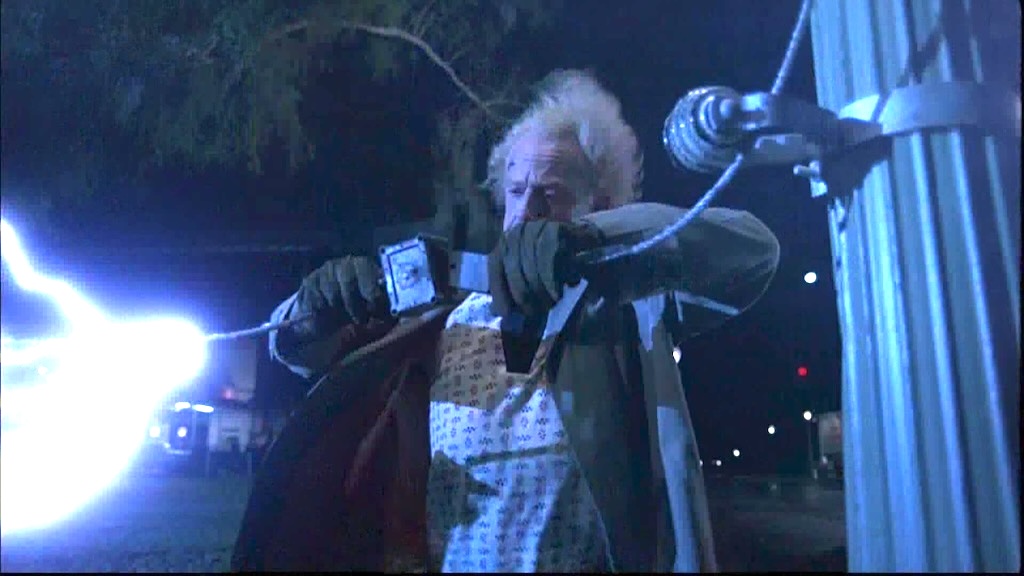Coding in Ruby is full of sweetness and light, but where there is light, shadows are cast. So, let’s get out our torches and see if we can illuminate our way through these darker corners of the language.
Variable Shadowing
The use of shadowing in a codebase usually refers to variable shadowing. A basic example of this in Ruby would be:
variable_shadowing.rb
x = 42
3.times { |x| puts "x is #{x}" }
Notice that there are two variables named “x”: the outer variable, and the block variable. Is this an actual problem, though? Let’s try running it:
$ ruby variable_shadowing.rb
x is 0
x is 1
x is 2
The output looks reasonable. The call to puts is inside a block, so it outputs the x value that is local to that block: it would definitely be surprising if puts prioritised values that are outside of its local scope, and output “x is 42” three times.
So, does Ruby really care that we are writing our code like this as long as we are getting the output we expect? To answer that, let’s try running the program again, but this time with warnings enabled:
$ ruby -w variable_shadowing.rb
variable_shadowing.rb:2: warning: shadowing outer local variable - x
variable_shadowing.rb:1: warning: assigned but unused variable - x
x is 0
x is 1
x is 2
It looks like Ruby does care: about both the shadowing, as well as declaring an unused variable (not enough to raise an error, but enough to make you feel that perhaps Matz is very mildly frowning at you). But why, though? Well, one reason could be that what if we wanted to change our program to have puts output both the block variable and the outer variable?
variable_shadowing.rb
x = 42
3.times { |x| puts "Local x is #{x} and outer x is #{'What goes here??'}" }
Since we already have a local variable named x, there is no way to access some other variable, also called x, that is outside the local scope. In order to get this to work, we would have to change the name of one of the variables:
variable_shadowing.rb
y = 42
3.times { |x| puts "x is #{x} and y is #{y}" }
$ ruby -w variable_shadowing.rb
x is 0 and y is 42
x is 1 and y is 42
x is 2 and y is 42
This is why variable shadowing in Ruby is generally considered “a bad habit and should be discouraged”. Aside from Ruby warnings, Rubocop has a ShadowingOuterLocalVariable cop (which mimics Ruby’s warning), so there are ways to enable your tools to help you keep the shadows at bay.
However, there is another kind of shadowy figure lurking at the peripheries of the Ruby language, aside from the variable-on-variable kind, that Ruby tooling does not warn you about. You are probably unlikely to come across it in the wilds of production code, but it is worth knowing about since it can make for some interesting/confusing behaviour.
Instance Method Shadowing

The Local Variables and Methods Assignment section of Ruby’s syntax documentation says that:
In Ruby, local variable names and method names are nearly identical. If you have not assigned to one of these ambiguous names, Ruby will assume you wish to call a method. Once you have assigned to the name, Ruby will assume you wish to reference a local variable.
The local variable is created when the parser encounters the assignment, not when the assignment occurs.
Ruby parses code line by line from top to bottom during run time. So, the understood meaning of one of the “names” mentioned above can change as the parser moves down the file: what was originally considered a method call, can become a reference to a local variable.
Let’s illustrate this using a completely contrived example:
person.rb
class Person
attr_accessor :name
def initialize(name = nil)
@name = name
end
def say_name
if name.nil?
name = "Unknown"
end
puts "My name is #{name.inspect}"
end
end
Given what we now know of local variable and method assignment, I would expect the following to happen when we attempt to get a Person to say its name:
- In the
#say_nameinstance method, the first occurrence ofname, seen in theif name.nil?statement, would refer to the#nameinstance method provided byattr_accessor - When the Ruby parser sees the
name = "Unknown"assignment line, it will, from that point on, consider any reference tonameafter the assignment to refer to a local variable calledname, and not the instance method#name - Therefore, even if an object of
Personhad a@nameassigned to it on initialisation (egPerson.new("Paul")), thenamereferenced in the final line of the#say_namemethod (name.inspect) would have a value ofnil. This is because at the point ofname.inspect, even thoughname.nil?would have failed, and therefore thename = "Unknown"local variable assignment would not actually be made, the parser still sees thatnameshould now refer to a local variable, which has not been assigned to, and so isnil.
Let’s open up an IRB console and test these assumptions.
$ irb
irb(main):001:0> require "./person.rb"
true
irb(main):002:0> Person.new("Paul").say_name
My name is nil
nil
Looks like the first assumption is confirmed:
- the instance method check of
name.nil?fails - a
namelocal variable is not assigned -
name.inspectis checking the value of a local variable and not an instance method -
nameis thereforenil
Now, what happens when we initialise a Person object without a name:
irb(main):003:0> Person.new.say_name
My name is "Unknown"
nil
-
name.nil?succeeds -
namelocal variable is assigned to"Unknown" -
"Unknown"is that value that gets output.
Great! I mean, kind of weird, but okay! Now, how about we dive a bit deeper and see if we can observe how the referencing of name changes as the Ruby parser reads through the code.
Schrodinger’s Variable

We will use the Pry debugger to see if we can follow name’s journey from instance method to local variable. After you
- run
gem install pry - add
require "pry"at the top ofperson.rb - add a
binding.prybreakpoint at the beginning of the#say_namemethod
open up another IRB console and let’s take a peek at what is going on.
$ irb
irb(main):001:0> require "./person.rb"
true
irb(main):002:0> Person.new("Paul").say_name
From: /person.rb @ line 13 Person#say_name:
10: def say_name
11: binding.pry
12:
=> 13: if name.nil?
14: name = "Unknown"
15: end
16:
17: puts "My name is #{name.inspect}"
18: end
[1] pry(#<Person>)>
Right, we now have a breakpoint at the point where name.nil? gets checked. At this point, we have not reached the name variable assignment, so name should refer to the instance method, and have a value of "Paul". Let’s check:
irb(main):002:0> Person.new("Paul").say_name
From: /person.rb @ line 13 Person#say_name:
10: def say_name
11: binding.pry
12:
=> 13: if name.nil?
14: name = "Unknown"
15: end
16:
17: puts "My name is #{name.inspect}"
18: end
[1] pry(#<Person>)> name
nil
[2] pry(#<Person>)>
Err, what? How does name have a value of nil if we have not reached the variable assignment statement yet? What is name referring to? Is this some weird Pry thing? So many questions…
Well, regardless of having our expectations flipped, let’s follow this through to the end. Since we now have nil, I would expect that our next stop will be at line 14, where "Unknown" does get assigned to name. Let’s let Pry go to the next execution statement:
[1] pry(#<Person>)> name
nil
[2] pry(#<Person>)> next
From: /person.rb @ line 17 Person#say_name:
10: def say_name
11: binding.pry
12:
13: if name.nil?
14: name = "Unknown"
15: end
16:
=> 17: puts "My name is #{name.inspect}"
18: end
[2] pry(#<Person>)>
It…skipped directly to the bottom, and it would seem that the assignment did not happen. Let’s see if that is the case, and what gets output:
From: /person.rb @ line 17 Person#say_name:
10: def say_name
11: binding.pry
12:
13: if name.nil?
14: name = "Unknown"
15: end
16:
=> 17: puts "My name is #{name.inspect}"
18: end
[2] pry(#<Person>)> name
nil
[3] pry(#<Person>)> exit
My name is nil
nil
irb(main):003:0>
This is all quite confusing. We got the expected result from running Person.new("Paul").say_name, but, on the way, did we encounter some kind of spooky quantum Ruby that ended up changing the value of name just because we observed it? Well, before we start handing ourselves honorary doctorates in quantum computing, let’s call on the old traditional Ruby debugger, puts, to see if we can get an impartial view of what the value of name is before the name.nil? check:
$ irb
irb(main):001:0> require "./person"
true
irb(main):002:0> Person.new("Paul").say_name
From: /person.rb @ line 13 Person#say_name:
10: def say_name
11: binding.pry
12:
=> 13: puts name.inspect
14: if name.nil?
15: name = "Unknown"
16: end
17:
18: puts "My name is #{name.inspect}"
19: end
Now, let’s compare what value we get for name when using Pry, versus the value we get inside the code with puts:
[1] pry(#<Person>)> name
nil
[2] pry(#<Person>)> next
"Paul"
From: /person.rb @ line 14 Person#say_name:
10: def say_name
11: binding.pry
12:
13: puts name.inspect
=> 14: if name.nil?
15: name = "Unknown"
16: end
17:
18: puts "My name is #{name.inspect}"
19: end
[2] pry(#<Person>)>
Running next executes the puts name.inspect code, which gives us "Paul", the value we expect, but Pry still says that name is nil. How can the same variable have two values? It can’t, so there must be something else at play here. What version of name exactly are Pry and puts seeing when the code is being stepped through? Well, there is one more Ruby tool that can help us find that out: the defined? keyword, which returns a string describing its argument.
$ irb
irb(main):001:0> require "./person"
true
irb(main):002:0> Person.new("Paul").say_name
From: /person.rb @ line 13 Person#say_name:
10: def say_name
11: binding.pry
12:
=> 13: puts defined?(name).inspect
14: if name.nil?
15: name = "Unknown"
16: end
17:
18: puts "My name is #{name.inspect}"
19: end
Okay, first, let’s see what what the Ruby code considers name to be:
From: /person.rb @ line 13 Person#say_name:
10: def say_name
11: binding.pry
12:
=> 13: puts defined?(name).inspect
14: if name.nil?
15: name = "Unknown"
16: end
17:
18: puts "My name is #{name.inspect}"
19: end
[1] pry(#<Person>)> next
"method"
Ruby says name is a method! That gels with what we would expect. So what about Pry…?
From: /person.rb @ line 13 Person#say_name:
10: def say_name
11: binding.pry
12:
=> 13: puts defined?(name).inspect
14: if name.nil?
15: name = "Unknown"
16: end
17:
18: puts "My name is #{name.inspect}"
19: end
[1] pry(#<Person>)> defined?(name)
"local-variable"
Pry sees name as a local variable! How can this be if we have not reached the assignment statement yet? Can Pry see into the future? Well, Pry itself can’t, and what is happening is not really seeing into the future.
Not even slightly elementary, my dear Ruby
The key to this mystery is the binding part of the binding.pry statement. Ruby’s Binding “encapsulates the execution context at some particular place in the code”, which, in our case, is the entirety of the #say_name method.
When we step through the code with binding.pry, at the point of the name.nil? statement, the Ruby parser sees name as referring to a method, since it knows nothing about any assignment statements yet. Pry, on the other hand, thanks to the binding effectively “rushing ahead to read the rest of the method” so it can create its execution context, knows all about the local variable assignments that could happen. Hence, we can now see the discrepancies in the results between running puts inline and using Pry in this case.
How can you avoid falling into these kinds of pits of potential confusion? Well, just don’t shadow, really. Leaving aside the quality issues of the example code (it is meant to illustrative of the problem and not exemplary Ruby code after all), to get expected results, there are enough ways it could be changed to fulfil different objectives like:
-
Specifically assign to the person’s
nameattribute if they were not given one:def say_name if name.nil? self.name = "Unknown" end puts "My name is #{name.inspect}" end -
Output a display name without assigning a
nameattribute if one was not originally given.-
Using
selfto refer to thenameproperty:def say_name name = self.name || "Unknown" puts "My name is #{name.inspect}" end -
Using parentheses:
def say_name name = name() || "Unknown" puts "My name is #{name.inspect}" end
-
So, be kind to your future self and your team mates, and re-consider shadowing in your code. If you ever do find yourself needing to, though, be sure to leave a comment explaining why.
Other Resources
- Behaviours of a Ruby local variable shadowing an instance method - A Stack Overflow question I asked regarding this kind of shadowing and that eventually led to the creation of this blog post.
- What does “shadowing” mean in Ruby? - A good Stack Overflow question outlining variable shadowing in Ruby.
- A Ruby shadowing bug in the wild - The blog post that originally got me scratching the surface of Ruby shadowing.





Leave a comment